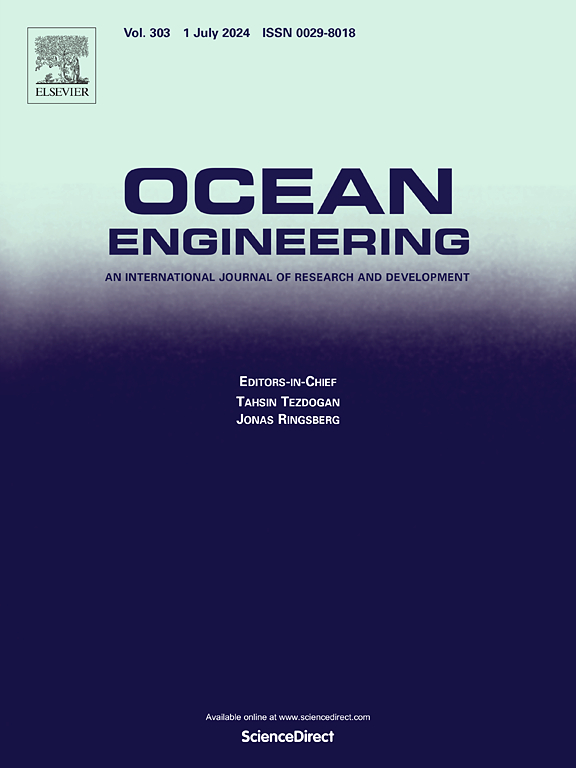锥形阀内涡蚀与前缘空化相互作用的LES研究
IF 4.6
2区 工程技术
Q1 ENGINEERING, CIVIL
引用次数: 0
摘要
本文利用大涡模拟(LES)研究了液压升船机系统中锥阀的涡蚀(VC)和前缘空化(LEC)之间的相互作用。通过与实验数据的比较,对预测结果进行了验证,得到了较好的一致性。锥阀内存在两种类型的气蚀,LEC型和VC型。非定常LEC脱离锥面形成环形腔,VC在套筒脱落涡内启动。它们强烈的相互作用导致环形空洞的形成、加速坍塌和二次生长。推导了涡旋力和压力梯度力诱发空腔界面变形和破裂的动力学平衡方程。增强的流体-机械力的联合作用增加了锥阀的阻力和振动,以及流动损失。最后,动量传递分析表明,加速坍缩是耗散驱动的动量增强的结果,而二次生长通过耗散减少和涡合并引起的低压效应来增加动量。VC和LEC之间的强相互作用显著放大了锥阀内的局部动量,通过增加流动损失和诱导振动直接改变了其动态响应,最终损害了整个升船机系统的稳定性。本文章由计算机程序翻译,如有差异,请以英文原文为准。
LES investigation on the interaction between vortex cavitation and leading-edge cavitation in a cone valve
In this paper, the interaction between vortex cavitation (VC) and leading-edge cavitation (LEC) in the cone valve for the hydraulic ship lift system is investigated utilizing the Large Eddy Simulation (LES). Predicted results are validated by comparing the experimental data, and a good agreement is obtained. Two types of cavitation, LEC and VC, are identified in the cone valve. The unsteady LEC detaches from the cone surface to form the Ring-like cavity, while VC initiates within shedding vortices of the sleeve. Their strong interaction causes the formation, accelerated collapse, and secondary growth of the Ring-like cavity. Moreover, a dynamic equilibrium equation is derived, indicating that vortex and pressure gradient forces induce cavity interface deformation and trigger fractures. The combined interaction of enhanced fluid-mechanical forces elevates the drag and vibrations, and flow losses of the cone valve. Finally, momentum transfer analysis reveals that accelerated collapse results from dissipative-driven momentum intensification, and secondary growth increases momentum through reduced dissipation and vortex merging-induced low-pressure effects. The strong interaction between VC and LEC significantly amplifies local momentum within the cone valve, directly altering its dynamic response by increasing flow losses and inducing vibrations that eventually compromise the stability of the entire ship lift system.
求助全文
通过发布文献求助,成功后即可免费获取论文全文。
去求助
来源期刊

Ocean Engineering
工程技术-工程:大洋
CiteScore
7.30
自引率
34.00%
发文量
2379
审稿时长
8.1 months
期刊介绍:
Ocean Engineering provides a medium for the publication of original research and development work in the field of ocean engineering. Ocean Engineering seeks papers in the following topics.
 求助内容:
求助内容: 应助结果提醒方式:
应助结果提醒方式:


